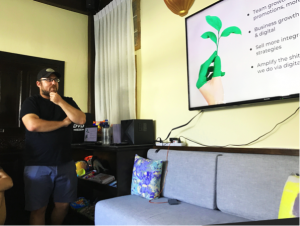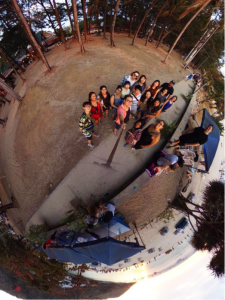Lately, it seems we are constantly surrounded by messages of positivity, mindfulness, gratitude and good vibes. So I want you to pause, take a deep, cleansing breath and repeat a mantra that will give you clarity and focus… bah humbug!
Sound familiar? Don’t get me wrong, optimism and positivity is the fuel that keeps you going through life – but a healthy dose of cynicism is also important.
Cynicism has gotten an understandably bad rap, but listening to your inner cynic can help you screen and vet beliefs, edit plans, and even give you the courage to speak out against bad ideas before they get too far. It helps to keep you grounded, thinking critically and looking out for rocky terrain. Don’t believe me? Then ask yourself if a cynic would have allowed Magnum to think that floral ice cream was the best way to celebrate the empowerment of women.
So put the Kool-Aid down, brew yourself a black coffee and let’s explore how your inner cynic can make you a better communicator.
Finding your inner cynic
This is the easiest step, as any communicator has seen enough to develop an instinct for bad ideas. An inner critic always starts off with a gut feel – an urge to roll your eyes and go “ugh, seriously?”. Of course, as professionals we don’t always say this out loud (this is, after all, a blog post about harnessing your inner cynic) as we don’t want to be viewed as being an outwardly unpleasant or a consistently contrarian person to be around.
However, as professionals, voicing concerns about an idea we think could negatively impact a client isn’t rude – it’s healthy and can be incredibly important. After all, the biggest misconception in the “be positive” movement is that we can’t be positive and creative while being cynical at the same time. The creative process usually involves some form of evaluation and refinement, and that inner cynic can push you to abandon unfeasible ideas and clear the way for new solutions to address an issue.
Editing your inner cynic
Like most other gut feelings, this cynical voice can come from both rational and irrational sources. It’s a culmination of past experiences and industry knowledge, but it can also stem from unconscious bias and faulty reasoning. Our job is to listen to the cynic, but to also question where it comes from – in other words, you have to be cynical about your cynicism.
If that sounds a little too meta, here are a few questions to ask yourself the next time an idea rubs you the wrong way:
- Have I seen something similar done before? Has that idea failed?
- If it sounds like something that’s failed before, were there any other factors that led to the failure that we could change this time around?
- Does this idea contradict something that I believe in? If so, is this belief sacred to me? Why?
- Does this idea go against something that its target audience believes? If so, can we – and should we – change our target audiences’ belief?
- Do I think that there is not enough time/resources/skill to implement the idea? What else does this idea need to become reality?
Most times, there is a solid justification for your gut feeling. But sometimes, that cynic speaks from an irrational place and it can hinder you from looking at the idea from all perspectives.
An experience that stuck with me was working with what I felt was an “unpitchable” client. They kept pushing badly designed products, but the client was absolutely convinced they were the bees’ knees. My inner cynic kept pushing back on a lot of their ideas, and most times that gut instinct was validated, as a lot of their products were badly reviewed and killed in a matter of months. After a while, it became second nature to find flaws in and discount whatever new thing they were sending us – but when someone new to the team asked me to pause and take a second look at a new product, I realised there was actually something unique about it. If I didn’t have that someone to remind me to check that inner cynic, we would have missed out on a great opportunity for that client.
Expressing your inner cynic
This is the hardest part – especially for people in an agency role where sometimes pushing back on a client can be complicated. But as communicators and guardians of our clients’ brands, we have a responsibility to tell them when something isn’t sitting well with us, even when it may lead to difficult conversations.
One way to do this is to justify your concerns with examples and data – this moves the conversation away from the realm of feelings and into one of facts. Another way is to come prepared with alternatives. No client enjoys being told they have a problem without being offered a solution. In terms of positioning your pushback, always be conscious about not attacking personal views or beliefs, and instead focusing feedback on solving your clients biggest challenges.
So the next time the urge to roll your eyes hit you when you hear a “bad” idea, take a deep cleansing breath, examine your feelings and harness your inner cynic to help you find the next best solution.
Have a few ideas up your sleeve but need a fresh, “cynical” pair of eyes? We can help : [email protected]


 Work first, then pool time? Thai and stop us… | Photo by: Ian Lee
Work first, then pool time? Thai and stop us… | Photo by: Ian Lee



















 A 360 team photo at Nai Harn Beach | Photo: Ian Lee
A 360 team photo at Nai Harn Beach | Photo: Ian Lee